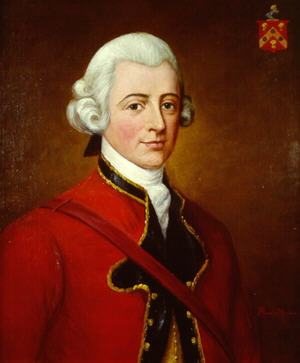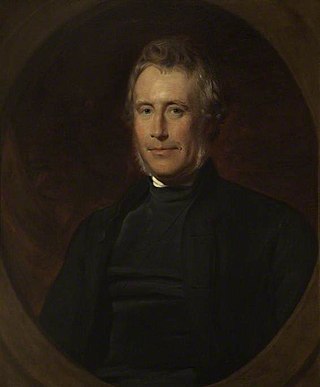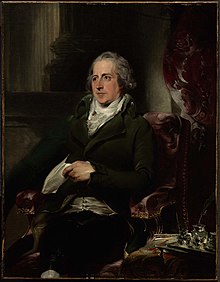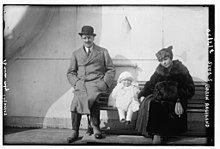
Earl of Huntingdon is a title which has been created several times in the Peerage of England. The medieval title was associated with the ruling house of Scotland.

Marquess of Ely, of the County of Wexford, is a title in the Peerage of Ireland. It was created in 1800 for Charles Loftus, 1st Earl of Ely. He was born Charles Tottenham, the son of Sir John Tottenham, 1st Baronet, who had been created a baronet, of Tottenham Green in the County of Wexford, in the Baronetage of Ireland in 1780, by Elizabeth, daughter of Nicholas Loftus, 1st Viscount Loftus, sister and heiress of Henry Loftus, 1st Earl of Ely. In 1783 he succeeded to the Loftus estates on the death of his maternal uncle the Earl of Ely and assumed the same year by Royal licence the surname of Loftus in lieu of his patronymic. In 1785 he was raised to the Peerage of Ireland as Baron Loftus, of Loftus Hall in the County of Wexford. It was sold by the family in 1917 and is today owned by the Quigley family.

Earl of Kintore is a title in the Peerage of Scotland. It was created in 1677 for Sir John Keith, third son of William Keith, 6th Hereditary Earl Marischal of Scotland and Chief of Clan Keith. He was made Lord Keith of Inverurie and Keith Hall at the same time, also in the Peerage of Scotland. At the death of William, the 4th Earl, in 1761, the Earldom and Lordship became dormant, as no-one could prove a claim to them. In 1778, it was decided that the Earldom, Lordship and Chieftaincy of Clan should pass to Anthony Adrian Falconer, Lord Falconer of Halkerton, who changed his surname to Keith-Falconer. The Lordship Falconer of Halkerton and the Earldom of Kintore and Lordship Keith of Inverurie and Keith Hall remained united until 1966, when, at the death of the 10th Earl, the Lordship Falconer of Halkerton became dormant.

Earl of Dunmore is a title in the Peerage of Scotland.

Earl Ferrers is a title in the Peerage of Great Britain. It was created in 1711 for Robert Shirley, 14th Baron Ferrers of Chartley. The Shirley family descends from George Shirley of Astwell Castle, Northamptonshire. In 1611 he was created a Baronet, of Staunton Harold in the County of Leicester, in the Baronetage of England. He was succeeded by his son Henry, the second Baronet, who married Lady Dorothy Devereux, daughter of Robert Devereux, 2nd Earl of Essex. On the death of her brother Robert Devereux, 3rd Earl of Essex, she became the youngest co-heir to the baronies of Ferrers of Chartley and the barony of Bourchier, which had fallen into abeyance on the death of the third Earl. Shirley was succeeded by his eldest son, the third Baronet. He died unmarried and was succeeded by his younger brother, the fourth Baronet. He was imprisoned in the Tower of London by Cromwell and died there in 1656. On his death the title passed to his eldest son, the fifth Baronet. He died at an early age and was succeeded at birth by his posthumous son, the sixth Baronet.

Earl of Macclesfield is a title that has been created twice. The first creation came in the Peerage of England in 1679 in favour of the soldier and politician Charles Gerard, 1st Baron Gerard. He had already been created Baron Gerard, of Brandon in the County of Suffolk, in 1645, and was made Viscount Brandon, of Brandon in the County of Suffolk, at the same time as he was given the earldom. These titles are also in the Peerage of England. Lord Macclesfield was the great-grandson of the distinguished judge Sir Gilbert Gerard, Master of the Rolls from 1581 to 1594. He was succeeded by his eldest son, the second Earl. He was involved in the Rye House Plot of 1683, was sentenced to death but later pardoned by the King. On his death without legitimate issue in 1701 the titles passed to his younger brother, the third Earl. He had earlier represented Yarmouth, Lancaster and Lancashire in the House of Commons. When he died in 1702 the titles became extinct.

Earl of Buckinghamshire is a title in the Peerage of Great Britain. It was created in 1746 for John Hobart, 1st Baron Hobart.

Earl of Guilford is a title that has been created three times in history. The title was created for the first time in the Peerage of England in 1660 for Elizabeth Boyle. She was a daughter of William Feilding, 1st Earl of Denbigh, and the widow of Lewis Boyle, 1st Viscount Boyle of Kinalmeaky. The title was for life only and became extinct on her death in 1667. The title was created for a second time in the Peerage of England in 1674 for John Maitland, 1st Duke of Lauderdale. For more information on this creation, see the article on him as well as the Earl of Lauderdale.

Viscount Torrington is a title in the Peerage of Great Britain. It was created in 1721 for the statesman Sir George Byng, 1st Baronet, along with the subsidiary title Baron Byng, of Southill in the County of Bedford, also in the Peerage of Great Britain. He had already been created a baronet, of Wrotham in the County of Kent, in the Baronetage of Great Britain in 1715. His eldest son, the second Viscount, represented Plymouth and Bedfordshire in the House of Commons and later served as Captain of the Yeomen of the Guard from 1746 to 1747. His younger brother, the third Viscount, was a major-general in the Army. His grandson, the sixth Viscount, was a vice-admiral in the Royal Navy. His son, the seventh Viscount, served as Governor of Ceylon between 1847 and 1850.

Earl of Gosford is a title in the Peerage of Ireland. It was created in 1806 for Arthur Acheson, 2nd Viscount Gosford.

Earl of Egmont was a title in the Peerage of Ireland, created in 1733 for John Perceval, 1st Viscount Perceval. It became extinct with the death of the twelfth earl in 2011.

Earl of Chichester is a title that has been created three times, twice in the Peerage of England and once in the Peerage of the United Kingdom. The current title was created in the Peerage of the United Kingdom in 1801 for Thomas Pelham, 2nd Baron Pelham of Stanmer.

Earl of Wilton, of Wilton Castle in the County of Herefordshire, is a title in the Peerage of the United Kingdom. It was created in 1801 for Thomas Egerton, 1st Baron Grey de Wilton, along with the subsidiary title of Viscount Grey de Wilton, also in the Peerage of the United Kingdom. Both titles were created with remainder to the second and all younger sons successively of his daughter Eleanor, wife of Robert Grosvenor, 1st Marquess of Westminster.

Earl Granville is a title that has been created twice, once in the Peerage of Great Britain and once in the Peerage of the United Kingdom. It is now held by members of the Leveson-Gower family.

Earl of Stradbroke, in the County of Suffolk, is a title in the Peerage of the United Kingdom. It was created in 1821 for John Rous, 1st Baron Rous, who had earlier represented Suffolk in the House of Commons.

Earl of Cottenham, of Cottenham in the County of Cambridge, is a title in the Peerage of the United Kingdom. It was created in 1850 for the prominent lawyer and Whig politician Charles Pepys, 1st Baron Cottenham. ) He served as Lord Chancellor from 1836 to 1841 and from 1846 to 1850. Pepys had already been created Baron Cottenham, of Cottenham in the County of Cambridge, in 1836, and was made Viscount Crowhurst, of Crowhurst in the County of Surrey, at the same time he was given the earldom. These titles are also in the Peerage of the United Kingdom. The viscountcy is used as a courtesy title for the Earl's eldest son and heir apparent.

Earl St Aldwyn, of Coln St Aldwyn in the County of Gloucester, is a title in the Peerage of the United Kingdom. It was created in 1915 for the prominent Conservative politician Michael Hicks Beach, 1st Viscount St Aldwyn, known from 1854 to 1907 as Sir Michael Hicks Beach, 9th Baronet, of Beverston. He was Chancellor of the Exchequer from 1885 to 1886 and again from 1895 to 1902. Hicks Beach had already been created Viscount St Aldwyn, of Coln St Aldwyn in the County of Gloucester, in 1906, and was made Viscount Quenington, of Quenington in the County of Gloucester, at the same time he was given the earldom. Both titles are in the Peerage of the United Kingdom. He was succeeded by his grandson, the second Earl, the son of Michael Hicks Beach, Viscount Quenington, Member of Parliament for Tewkesbury, who was killed in action in 1916. Lord St Aldwyn was also a Conservative politician and was Captain of the Honourable Corps of Gentlemen-at-Arms between 1958 and 1964 and 1970 and 1974. As of 2018 the titles are held by his eldest son, the third Earl, who succeeded in 1992.

Baron Henley is a title that has been created twice: first in the Peerage of Great Britain and then in the Peerage of Ireland. The first creation came in 1760 in favour of Sir Robert Henley, Lord High Chancellor of Great Britain, when he was created Lord Henley, Baron of Grainge, in the County of Southampton. In 1764 he was further honoured when he was made Earl of Northington. On the death of his son, the second Earl, both titles became extinct. Lady Elizabeth Henley, youngest daughter of the first Earl and co-heiress of the second Earl, married the diplomat Morton Eden. In 1799, the Henley title was revived when Eden was created Baron Henley, of Chardstock in the County of Dorset, in the Peerage of Ireland. Their son, the second Baron, assumed the surname of Henley in lieu of Eden and notably published a biography of his maternal grandfather. His son, the third Baron, sat as Liberal Member of Parliament for Northampton. In 1885 the Northington title was also revived when he was created Baron Northington, of Watford in the County of Northampton, in the Peerage of the United Kingdom. This title gave the Barons an automatic seat in the House of Lords. The fourth baron Frederick Henley was an educated man who served as JP in Northamptonshire and married Augusta, daughter of Herbert Langham 12th baronet.

The Eden Baronetcy, of West Auckland in the County of Durham, and the Eden Baronetcy, of Maryland in North America, are two titles in the Baronetage of England and Baronetage of Great Britain respectively that have been united under a single holder since 1844.

Robert John Eden, 3rd Baron Auckland, styled The Honourable Robert Eden from birth until 1849, was a British clergyman. He was Bishop of Sodor and Man from 1847 to 1854 and Bishop of Bath and Wells from 1854 to 1869.









